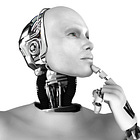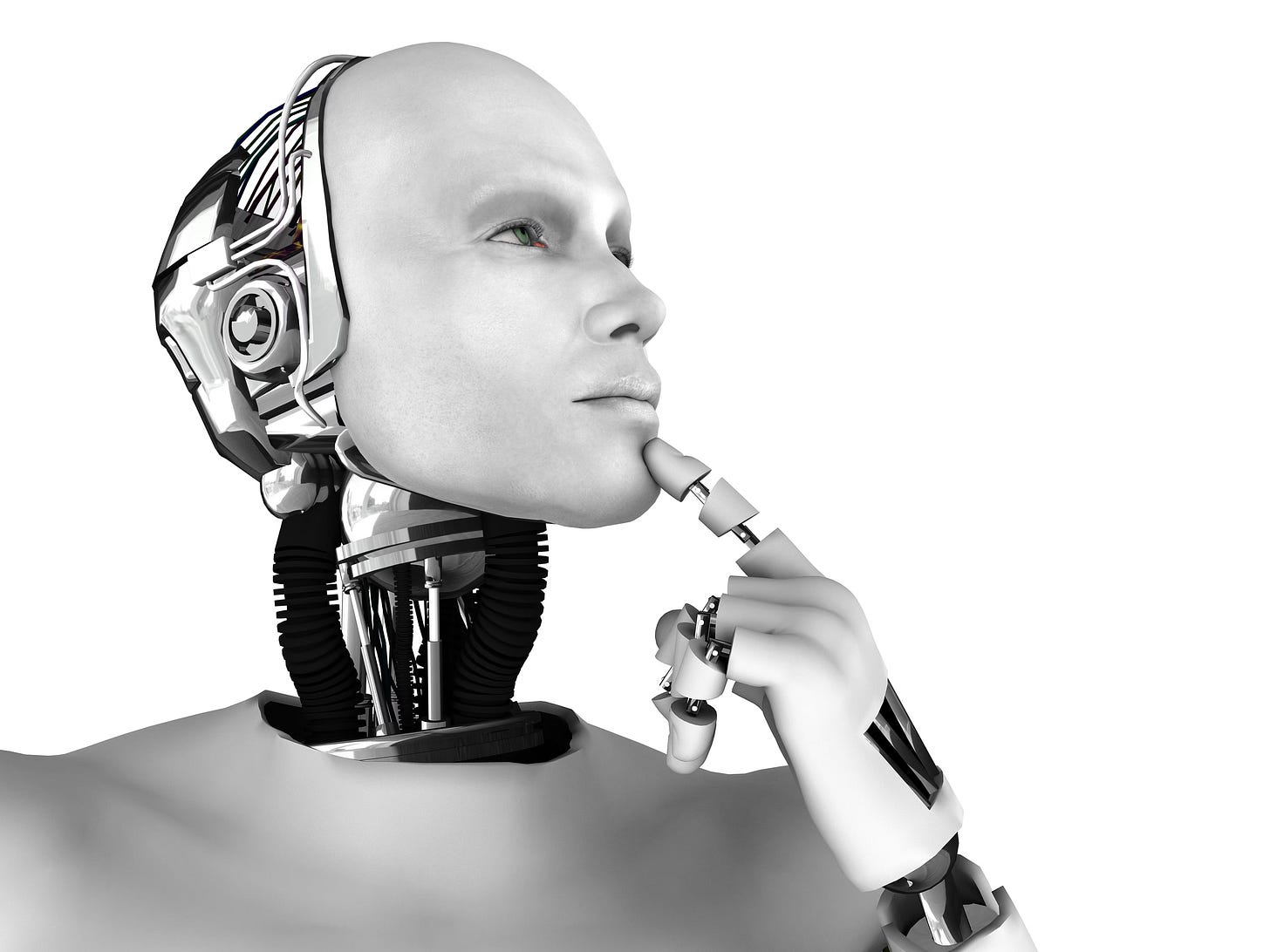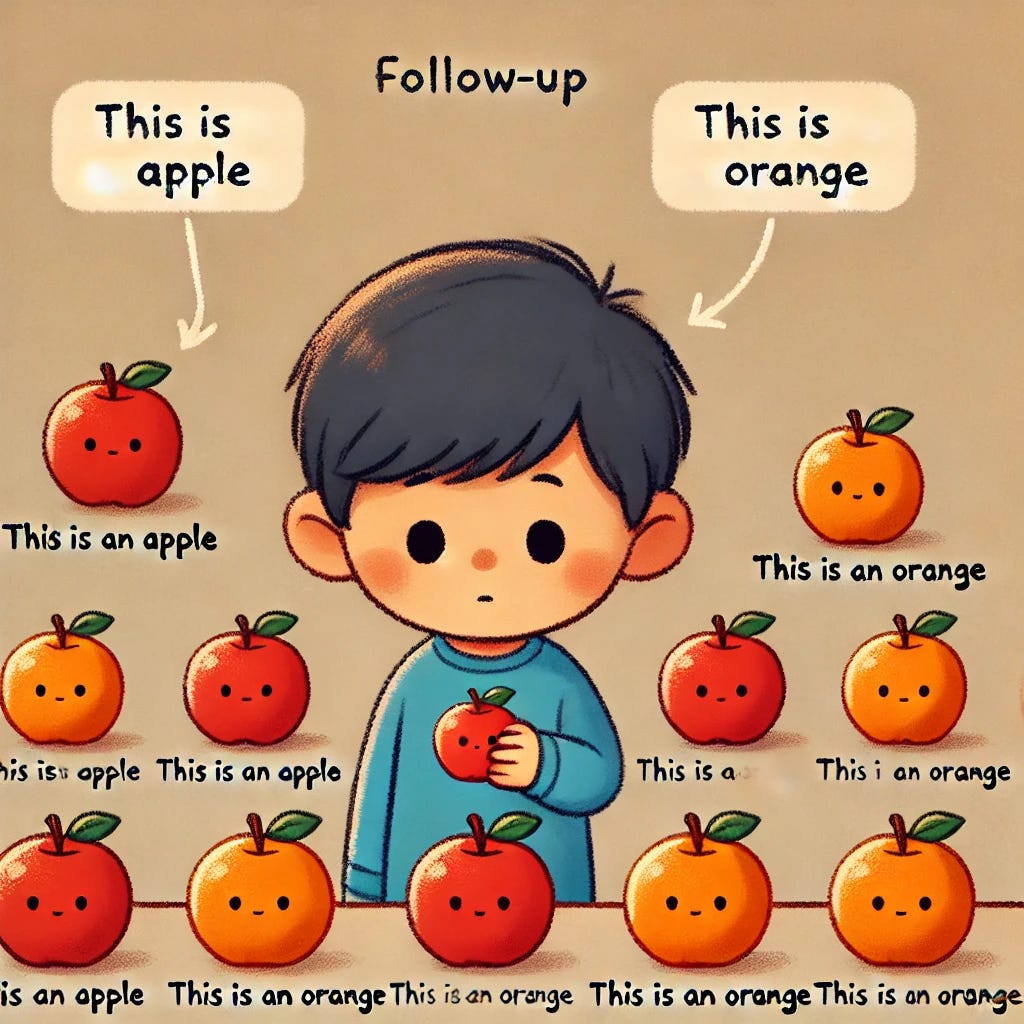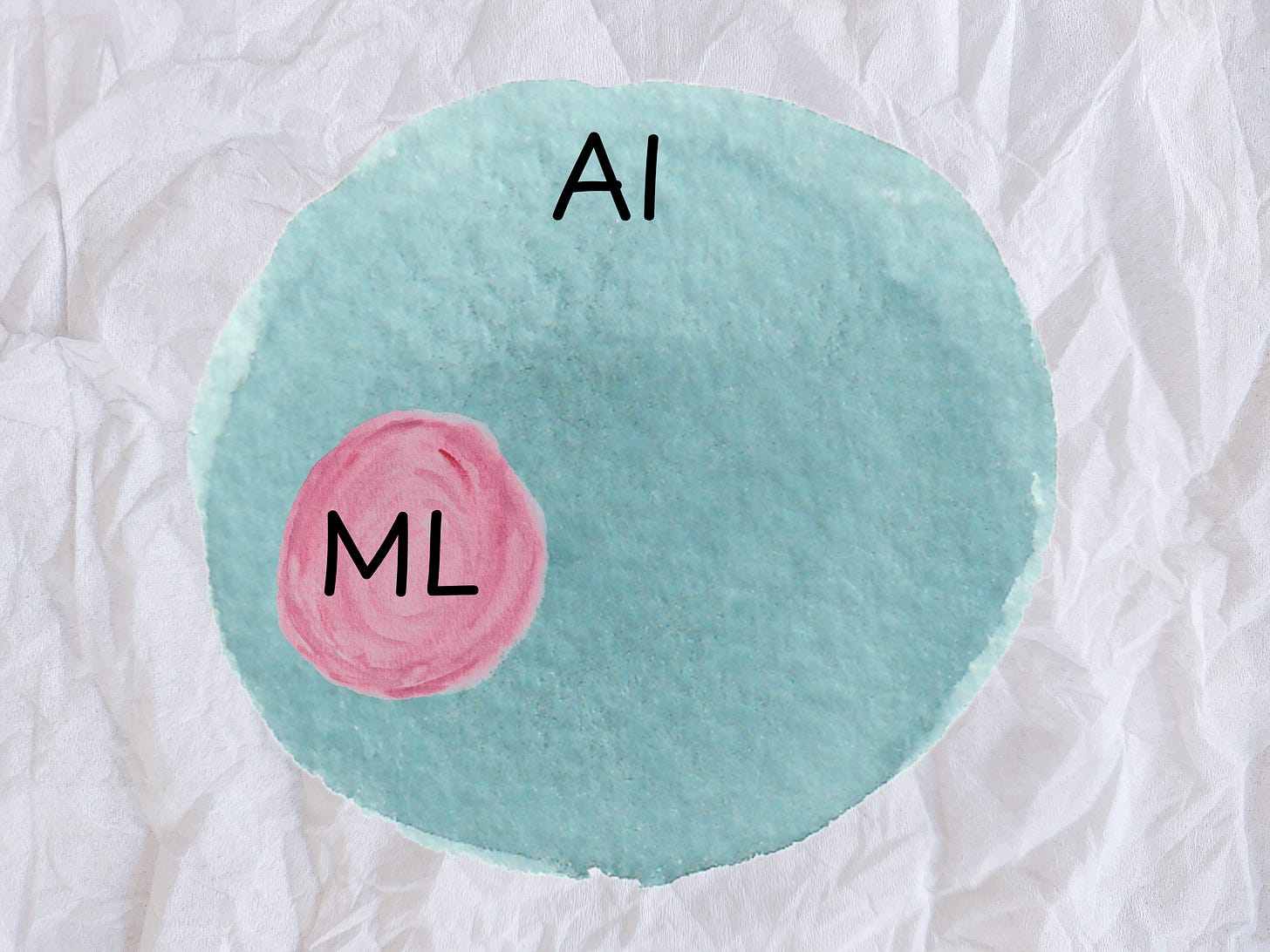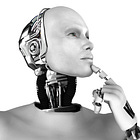AI 101: The Ultimate Beginner's Guide to Artificial Intelligence(AI) - Part 2
Discover how machines learn and make the systems more intelligent.
Before learning about how machines actually learn, learn what AI is -
Bob had barely slept.
The whole "AI is pattern recognition" thing made sense. But it still left him wondering:
"If AI is just learning patterns, how does it actually do that? Does it memorize everything? Does it guess?"
Determined to figure it out, Bob messaged Shubham the next morning.
Bob: Bro, I can’t stop thinking about AI. Let’s meet up again. I have more questions.
Shubham: Haha, you’re hooked now! Meet me at the café in 15 minutes.
"Alright," Shubham said, setting his coffee down. "Let’s break this down. AI doesn’t memorize everything—it learns like a kid does."
"Go on…" Bob said, intrigued.
Shubham grabbed a napkin and a pen.
"Imagine you want to teach a 3-year-old the difference between an 🍏 apple and an 🍊 orange."
First, you show the kid 10 apples and 10 oranges.
Each time, you say "This is an apple" or "This is an orange."
After seeing enough examples, the kid learns to recognize the difference.
Now, when you show them a new fruit, they can guess if it’s an apple or an orange!
"Okay, that makes sense. But what does this have to do with AI?" Bob asked.
Shubham grinned.
"This is exactly how Machine Learning works!"
“Yeah you told me about this last time as well, but how are these machines learning? I can make a kid sit down and show the images but how does it work in case of machines?”
"Alright," Shubham said, drawing a circle on the napkin and writing AI in the middle.
"AI is the big umbrella—it covers everything related to making machines smart."
Then, he drew a smaller circle inside AI and labeled it Machine Learning (ML).
"Machine Learning is a subset of AI—it’s the part of AI that actually learns from data instead of being programmed with fixed rules."
"Wait… so not all AI can learn?" Bob asked, confused.
"Correct!" Shubham nodded.
"Some AI is just pre-programmed with rules—it doesn’t learn on its own. Like a chess bot from the 90s that only follows programmed moves."
"But Machine Learning is different. It improves over time, learning from examples, just like the apple-orange example we discussed."
Bob frowned. "So if Machine Learning is inside AI, then what’s the rest of AI?"
Shubham quickly jotted down an easy way to understand AI vs. ML:
Artificial Intelligence (AI) = The big idea.
AI is any machine that tries to act smart (even if it doesn’t learn).
Example: A rule-based chatbot or an old chess-playing computer.
Machine Learning (ML) = A type of AI that learns on its own.
ML finds patterns in data and improves over time.
Examples: Netflix recommendations, self-driving cars, ChatGPT.
Bob nodded slowly.
"Okay, so all Machine Learning is AI, but not all AI is Machine Learning?"
"Bingo!"
Shubham pulled out his phone.
"Let’s take an example you see every day—Netflix recommendations."
How Netflix Uses Machine Learning to Predict What You’ll Watch:
Netflix collects data on what you watch.
It compares your choices with millions of other users.
It finds patterns—like "People who liked Inception also liked Interstellar."
It predicts what you might enjoy next.
"So… Netflix isn’t guessing randomly?" Bob asked.
"Nope! It’s using Machine Learning to understand your taste."
Bob laughed.
"Damn, AI really does know me better than I know myself."
Bob was hooked.
"Okay, Machine Learning is insane. But I still don’t get how it actually makes these decisions. How does an AI model know whether something is an apple or an orange? Or if I’d like a movie?"
"Great question. The secret behind ML is models, data, and training.”
1. The Model – AI’s Brain
A model is like an AI’s brain. It’s a system that processes data and makes predictions.
Different AI models are built for different tasks—some recognize images, some understand speech, and some generate text (like ChatGPT!).
2. The Data – AI’s Knowledge Base
AI learns from huge amounts of data.
The more diverse and high-quality the data, the smarter the AI becomes.
AI can learn from images, text, speech, or even real-time experiences (like self-driving cars!).
So AI is only as smart as the data we give it?
Bad data = Bad AI.
3. Training – The Learning Process
AI starts off clueless (like a newborn baby).
During training, AI studies the data, makes predictions, and gets corrected when it’s wrong.
Over time, it improves and makes fewer mistakes.
Bob scratched his head.
"So training is just AI practicing, over and over?"
"Bingo!" Shubham said. "Just like you get better at a sport with practice, AI gets better with more data and feedback."
"Okay," Bob said. "But how does training actually happen?"
Shubham smiled.
"Let’s say we want to train an AI to recognize if a photo contains a cat. Here’s what happens:"
Step 1: Show AI Thousands of Dog and Non-Dog Images
AI looks at millions of pictures labeled "Dog" or "Not a Dog."
It tries to identify patterns—fur, whiskers, ears, tail.
Step 2: AI Makes Guesses
At first, AI gets a lot of things wrong—it might think a cat is a dog.
Each time, it gets feedback (right or wrong) and adjusts its thinking.
Step 3: AI Gets Smarter Over Time
After thousands of corrections, AI becomes highly accurate.
Now, when shown a new image, it can confidently say "Yes, this is a dog!"
Bob nodded slowly.
"So the more data it sees, the better it gets?"
"Exactly!" Shubham replied.
"AI learns from experience just like humans do."
"But wait," Bob said. "If AI learns from data, does that mean it can keep improving forever?"
"Yes and no," Shubham replied.
AI can improve with new data, but there’s a limit—sometimes it needs retraining.
AI can also make mistakes if trained on biased or bad data.
"Oh, so that’s why AI sometimes gives weird or wrong answers!" Bob realized.
"Exactly!" Shubham said. "That’s why training AI the right way is so important."
Bob was still curious and asked
"But wait… how exactly do we train AI? Do we always need to give it labeled data, like 'This is a dog, this is not'?"
Shubham smiled.
"Great question! Actually, there are different ways AI can learn. Some need labeled data, some don’t, and some even learn from trial and error!"
Bob raised an eyebrow. "Wait, AI can learn without instructions?"
"Yep," Shubham said, standing up and stretching. "But that’s a whole discussion on its own. If you’re serious about understanding AI, meet me here tomorrow. I’ll explain Supervised Learning, Unsupervised Learning, and Reinforcement Learning—the three ways AI actually learns."
Stay tuned to discover the different ways machines can learn—some might even surprise you!



